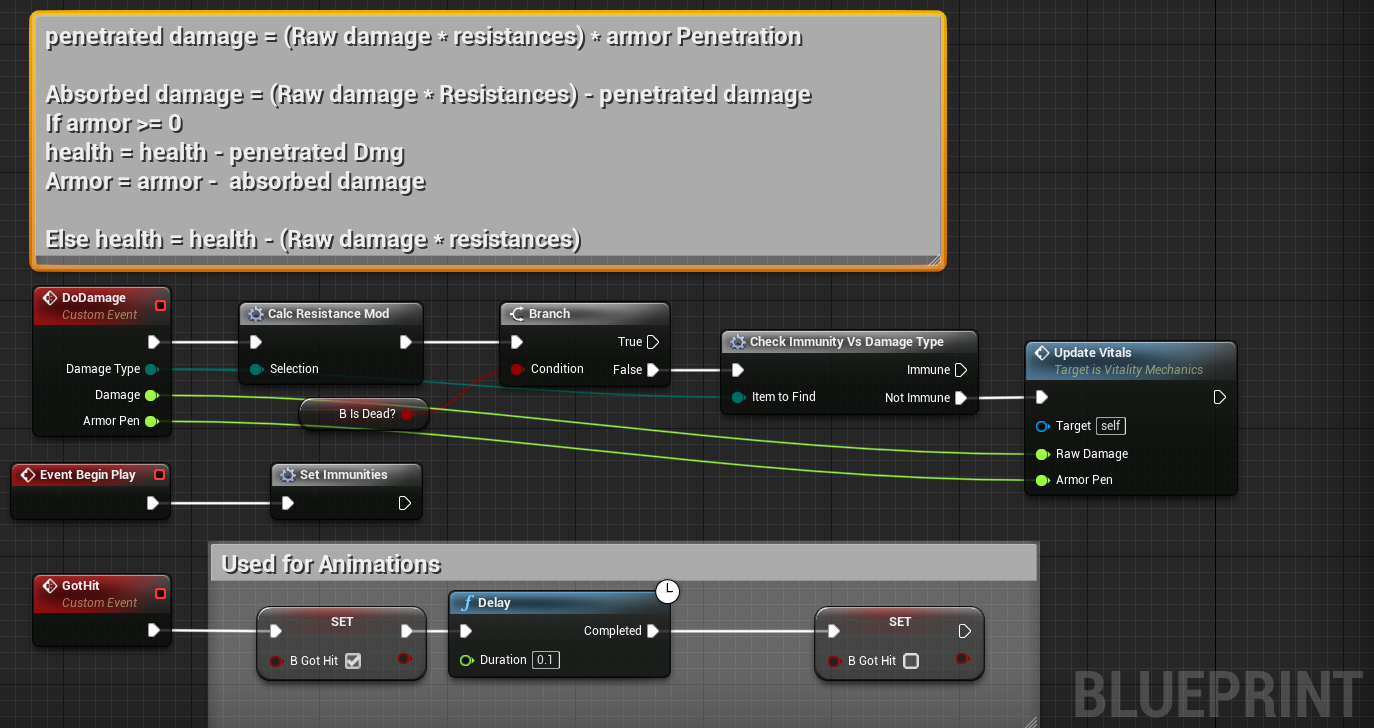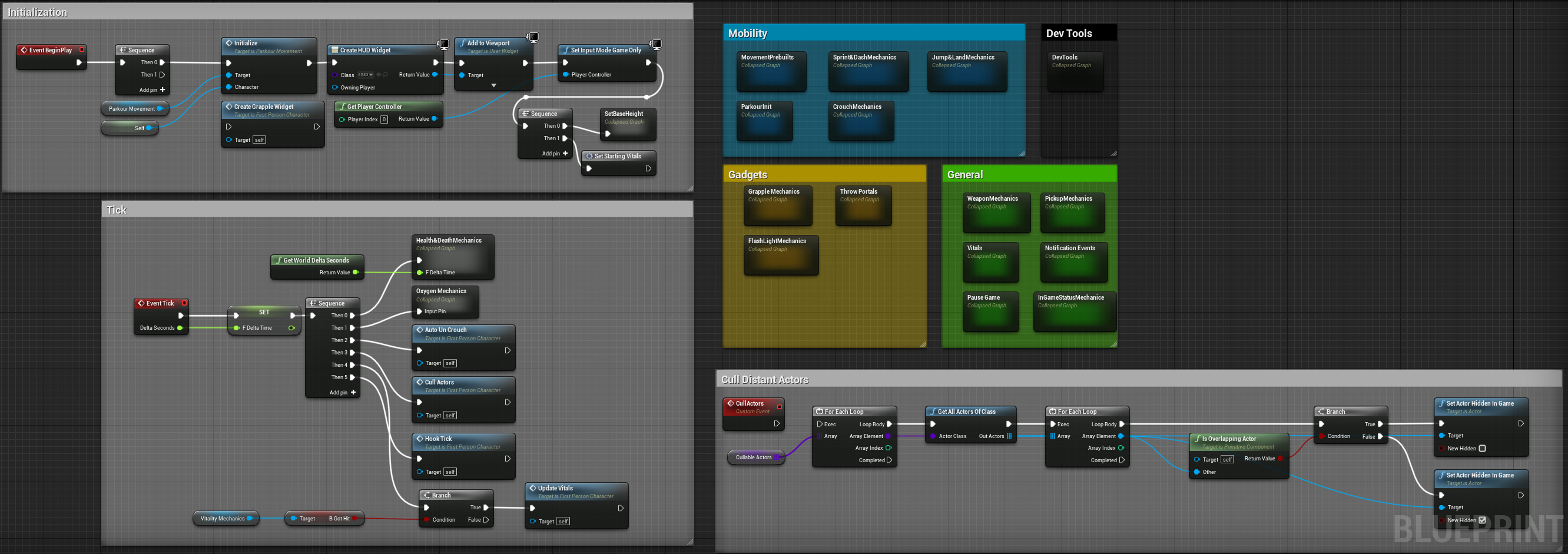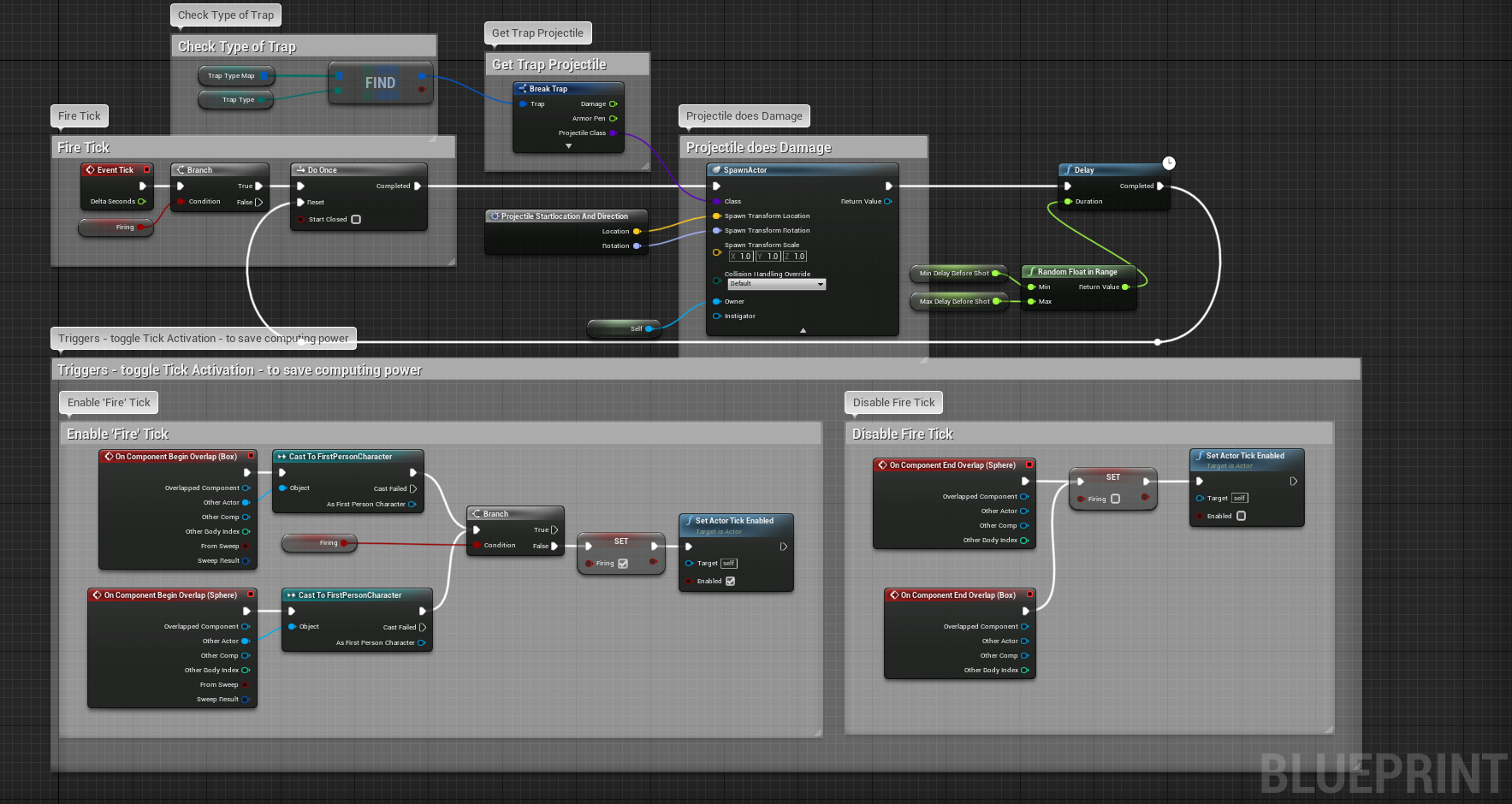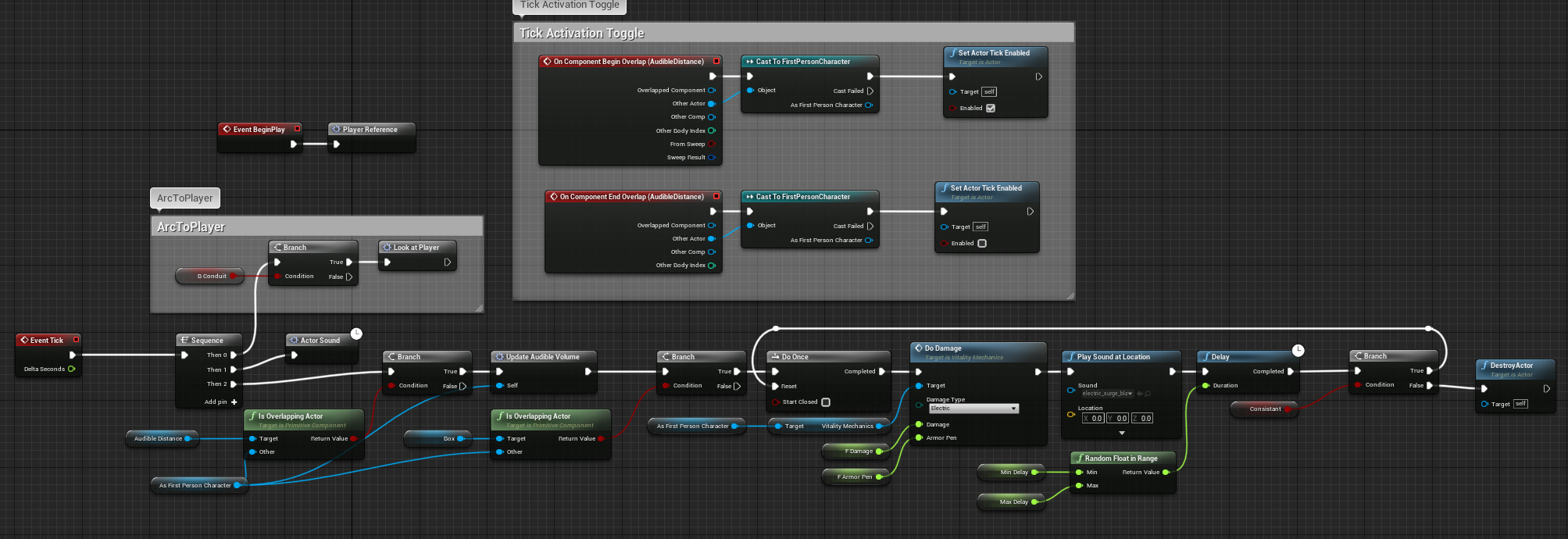Visual Scripting
Coming from a background of coding and scripting, I have developed a confident mind when it comes to functionality and problem solving. I translate this into a strong understanding and weilding of the Blueprint module.
With previous experience in Javascript, C++, HTML and a few other languages, I know how to make elements communicate with eachother to achieve desired results.
Vitality Mechanics
The Vitality Mechanics Module presented below is used as a health, damage and resistance calculation mechanic used amongst all Aegis Corps enemies and objects capable of taking damage. It recieves an input from a damaging object which takes the damage, armor penetration coeficient, and damage type, and calculates it against the reciever's resistances, immunities, armor, and lastly, health.
Vitality Mechanic Triggers
The example below is the over-arching event graph which shows damagin coming in, checked against resistances and update the vitals. It also toggles a variable to allow objects to enter an animation when hit.

Vitality Mechanic Updates
Damage is first reduced by resistances, then checks if we have armor and how much. Then we calculate how much damage penetrates armor - reduced from health, and the rest is reduced from armor until armor is 0, and then removing the remainder from health directly.

First Person Character Special Calls
First Person Character Event Graph
It has General mechanics, which include weapon control and switching, vitality(health, armor, oxygen and resistances), as well as notification mechanics, interaction mechanics, and other UI actions. Lastly, the blueprint houses several gadgets that are used in the game, currently including Grapple, Portals, and Flashlight.

In-game UI Reveal
The player presses a button to reveal a hidden UI which is attached to a socket on the player model's wrist. The blueprint controls calls which animate the UI using timelines and lerps, as well as sending a Enum state which is used to trigger player animation. The blueprint also converts the game input to UI and game, allwoing the player to keep movind but still click through.

Projectile and Combat Mechanics
Projectile Mechanics
Picks up reference on currently selected weapon and its ammo and determines whether to use a line trace, multi-line trace (for weapons which can penetrate objects), and launcher-type weapons which use a 'projectile' actor. If the ammo uses any form of trace, it also calls for the DealDamage event, which communicates with the hit object's "Vitality Mechanic"

Impulse Mechanics
A simple mechanic to be used for bullets which use Line trace, as linetrace doe not inherntly provide a velocity to pull impulse from. The blueprint checks if the hit object is capable of recieving impulse; if it is, it calculates the vector force and multiplies it times the damage done by the bullet (pulled from the Projectile Mechanics blueprint)

Penetrating Ordinance
The dictates how many ordinances per shot should be calculated. Upon 'Firing', the blueprint checks all objects hit as a line-trace within the 'effective range' per ordinance, with the endpoints per linetrace being altered by a random unit, controlled by the "spread" variable pulled from the .

Environmental Mechanics
Trap
Traps are the most common elements in games. This blueprint runs through an actor which has the option to be one of four different types of traps, each with different types of projectiles. The trap only ticks when a player is nearby or in the projectile path. It relies on the projectiles summoned by the actor to deal the damage, therefore does not directly dictate any damage variables.

Electricity Damage
Used for multiple purposes, this electricity blueprint checks the player every second the player is overlapping the electric zone. it can be used as an actor spawned by a trap, or it can be placed in the world to depict hot cables, volatile conduits and more. The blue print attempts to replicate the natural behavior of el;ectricity by arcing towards the player by a simple use of 'Look at' rotation.

Interactable Keyboard
Not all world actors need to be damaging. Elements of immersion include transitions from a standard camera to a focus on interactable objects such as keyboards, terminals and other objects. Upon interaction, this blueprint shifts the player camera to focus in on the door keypad, to use a clickable UI to punch in a code which would unlock a door in the world.


